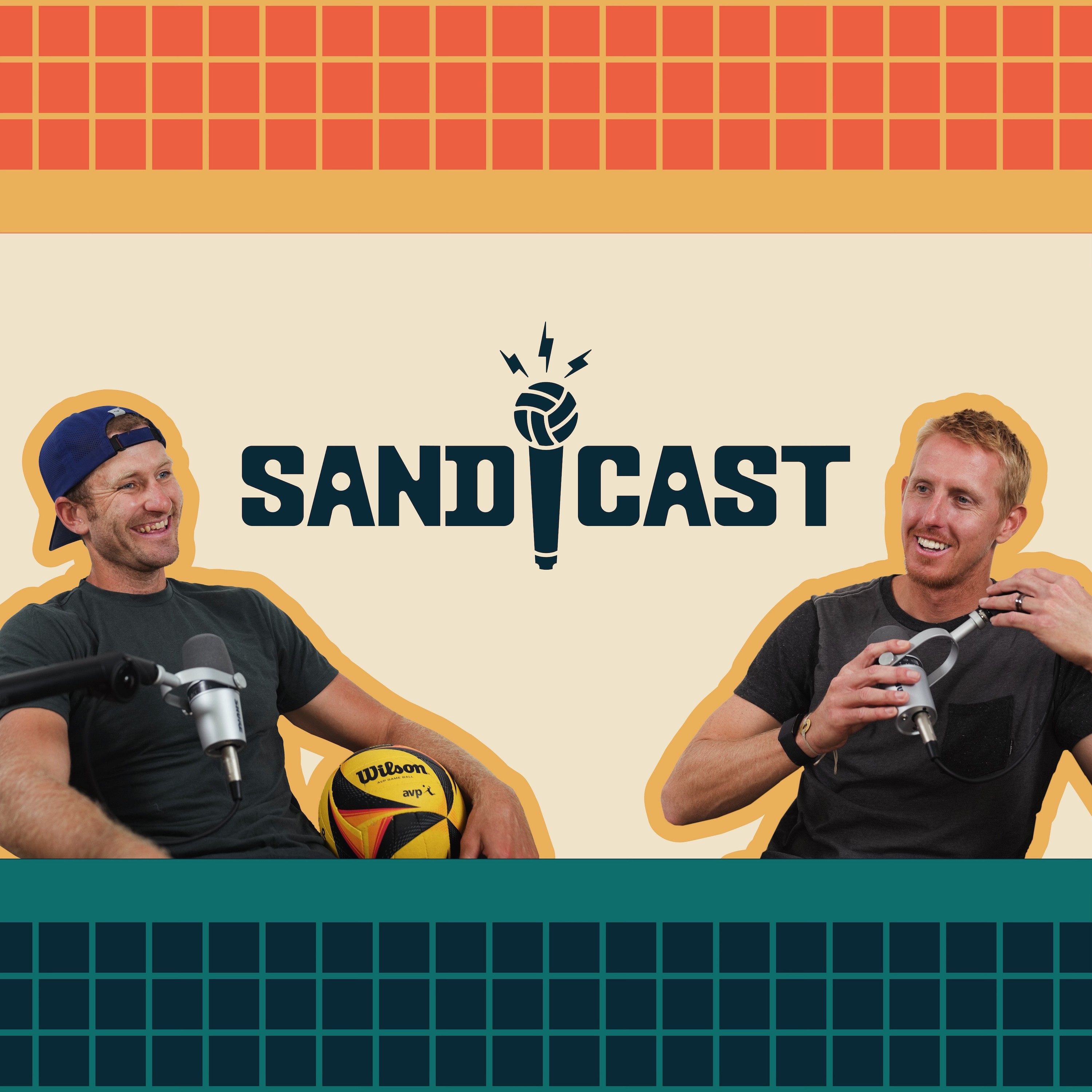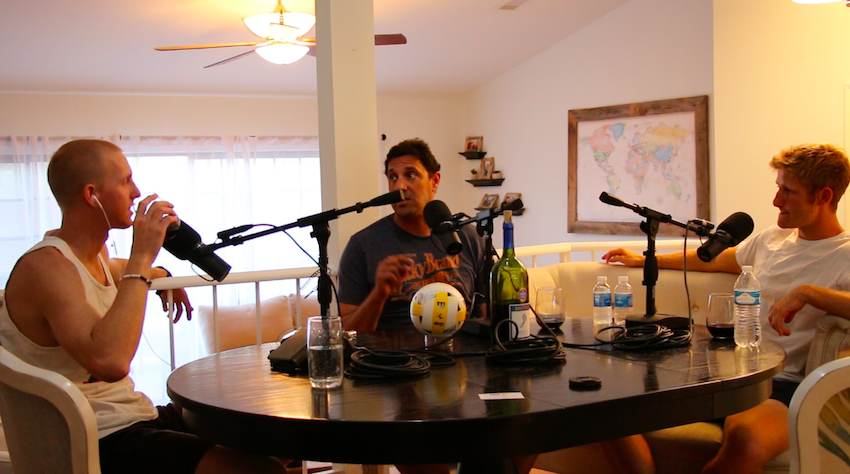

1.1M
Downloads
465
Episodes
SANDCAST is the first and leading beach volleyball podcast in the world. Hosts Tri Bourne and Travis Mewhirter take listeners into the world of the AVP, Volleyball World Beach Pro Tour and any other professional beach volleyball outlets, digging deep into the lives of the players both on and off the court as well as all of the top influencers in the game.
Episodes

Wednesday Apr 18, 2018
Jose Loiola's legend only continues to grow
Wednesday Apr 18, 2018
Wednesday Apr 18, 2018
To read through the old LA Times archives, to dig through all of the gushing, flattering pieces, is to remember Jose Loiola as a man of near mythical proportions, a beach volleyball Paul Bunyan. How hard he could hit! How high he could jump! How entertaining he was to watch! How loud and brash and charismatic he was!
Loiola laughs at those memories. He laughs through a glass of wine, even though he has sworn off alcohol during the week.
It’s just one glass, right?
Nothing compared to what he and the boys could put down during the 90s, when the AVP was a rollicking party dishing out tens of millions per year and Brazil was in its nascent stages of becoming a bona fide beach volleyball power.
Loiola was the first, and for the 48-year-old there is no forgetting the day he and Eduardo Bacil took down the Gods. Back then, in the late 80s and early 90s, the Gods were known as Smith and Stoklos.
In the 86, 87 and 88 seasons, Sinjin Smith and Randy Stoklos would win 44 of 71 AVP tournaments and three of four FIVBs. You could count on one hand the teams who had a shot at beating them, and Jose Loiola would not have been among them.
It is with a delicious stroke of irony that Loiola and Bacil, a fellow Brazilian, stunned the Americans in their primes. Beach volleyball had been a weekend activity in Brazil prior to 1987. Nothing more. It was a soccer-mad state with beautiful beaches and recreational volleyball.
It was Smith who had a vision for the sport to grow internationally, Smith who worked with then-FIVB president Ruben Acosta to grow the game overseas, Smith who helped form an exhibition match in Rio de Janeiro, awakening the dormant beach volleyball giant that is the nation of Brazil.
Without Smith’s and Acosta’s efforts to establish the game in Brazil when they did, it’s quite possible we might never have heard of Loiola and Bacil. Without the FIVB establishing a beach volleyball branch to its indoor league, there may not be beach volleyball in the Olympic Games, and by extension no reason for Americans to pay attention to Brazilian beach volleyball at all.
But in 1993 there was no longer a choice. They had to watch, and with rapt attention, as Loiola and Bacil, who earned a wildcard to a pair of AVP events, in Fort Myers and Pensacola to begin the season, and then made every main draw after that on points, established themselves as one of the only international teams who could be reasonably expected to beat the Americans.
“I had the opportunity to play with and against the players I had grown up idolizing, the players I had grown up watching,” Loiola said on SANDCAST. “To me, that was the best thing. I’m competing with them and I’m beating all of them. From that point on, I realized if I put my time in and I become more professional and learn the hoopty-hoops, with the discipline and the perseverance, I knew I was going to get far.”
Loiola is not a man prone for understatement, and yet for him to describe his career as able to go far, and not to distances never before seen by a Brazilian beach volleyball player, is an understatement indeed. For at the end of that 1993 season, Loiola had been awarded the AVP Rookie of the Year, the first international player to do so.
In ’95, playing in an indoor beach tournament in Washington D.C., he and Bacil beat Stoklos and Adam Johnson in the finals, marking the first time an international team had claimed an AVP title.
“The AVP was the NBA of volleyball,” Loiola said. “It attracted the best players on the planet. It was, by far, the best tour.”
So much so that the AVP’s status as the premiere tour began to create animosity both in the U.S. and elsewhere. The Brazilian federation wanted Loiola to quit playing on the AVP and join the Brazilian national team so he could represent his native country in the 1996 Olympics, its inaugural year as an Olympic sport. The Americans, meanwhile, fought over a similar fault line: Why would they compete on the FIVB, an inferior tour with inferior money, to qualify for the Olympics? What could possibly compel them to travel overseas to play in a tournament for less prize money, against teams that couldn’t compete on the AVP, rather than stay home and play against the best?
While the Americans fought for a U.S.-based Olympic trial, Loiola demurred. He wasn’t going home to compete for a Brazil on the FIVB. He didn’t care about the Olympics. He cared about playing against the best.
And in those halcyon days, the AVP featured the best.
“In 1996, I had the choice,” Loiola said. “Either I go to the Olympics or I stay here and play AVP. I didn’t go to the Olympics. Why would I want to go to the Olympics when I could stay here, play 25 or 26 tournaments, making three times more money, why would I want to go to the FIVB and travel all over the world?”
He didn’t, choosing to remain in America while Brazil sent Emanuel Rego and Ze Marco de Melo and Roberto Lopes and Franco Neto to Atlanta. Neither finished better than ninth.
Loiola had no real reason to change course. Named the AVP Offensive Player of the Year from 1995-1998, he was one of the best players in the world playing on the best tour, with the top competition and more prize money than the sport had ever seen.
And then the AVP tanked.
Years of financial mismanagement had been masked by packed stadiums and electrifying volleyball and a rabid fan base. In 1997, the façade crumbled.
The AVP went bankrupt. The script had been flipped. To the FIVB Loiola went, rising up the world rankings with Rego, winning the FIVB World Championships in 1999, holding the No. 1 ranking heading into the 2000 Olympics, in Sydney, only to succumb in a stunning upset, finishing ninth.
“We just had a bad game,” Loiola said. “No excuses. Sometimes that just happens.”
It is one of the great shames of the sport that beach volleyball success is measured by Olympic success, for Loiola would never return to the Games. His hips went bed, to the point that he said he “was playing on one leg.”
His final event came in 2009, in Atlanta with Larry Witt. He’s since been inducted into the CBVA Hall of Fame, the International Volleyball Hall of Fame, the Volleyball Hall of Fame.
A living legend. And one who’s now imparting his wisdom on the next generation of them, serving as the coach of Sara Hughes and Summer Ross.
The fire’s still burning, the embers still hot, even as a coach. So disappointed was he after Hughes and then-partner Kelly Claes finished ninth in Fort Lauderdale that he hopped on the first flight out.
Now it’s Hughes and Ross.
He loves Hughes’ fire, Ross’ spunk. He wants to win FIVB Huntington Beach in the first week of May, knowing how much it would mean to Hughes, a Huntington native.
“That’s the one we want to win,” Loiola said. “In our home, our homeland. We’re excited, we’re on the right track. It’s just a matter of time.”
No comments yet. Be the first to say something!